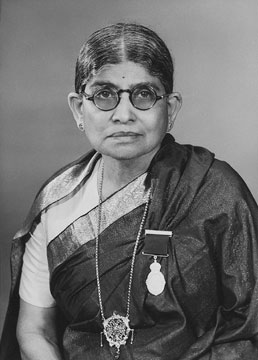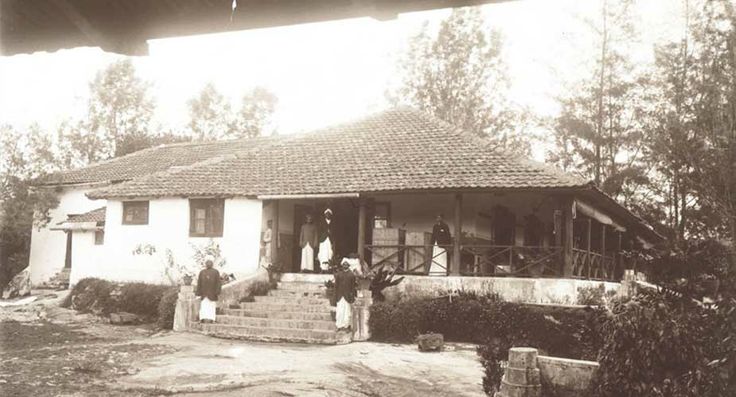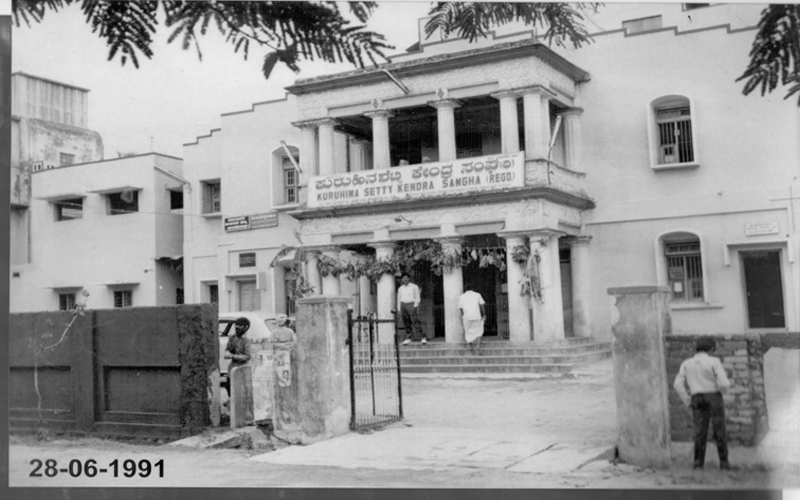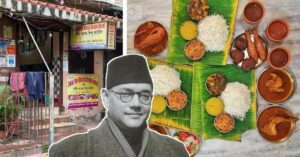Blazing A Trail: The Forgotten Story of Bengaluru’s ‘Coffee Pudi’ Sakamma
Here's the forgotten story of Karnataka's 'Coffee Pudi' Sakamma, an extraordinary woman who exerted her influence on Bengaluru through the decades.

Mornings often begin with a cup of piping hot filter ‘kaapi’ in Karnataka, a state with one of the strongest coffee drinking cultures in India. Not only does it produce more than 70% of the country’s coffee, it is also the only Indian state with a per capita monthly consumption of more than one cup of coffee (according to NSSO data).
And leading this coffee-guzzling trend is the state’s capital, Bengaluru. From old favourites like the Indian Coffee House to new-age roasteries, the city has long been hooked to this wonder-bean.
However, few know that coffee is also the link that connects Bengaluru to one of it most trailblazing entrepreneurs, a woman who exerted her influence on the city through the decades.
The woman was D. Sakkama and this is her untold story.

Born in Bidare (a village in Karnataka’s Tumkur district) in 1880, Sakamma was a young girl when her parents moved to Bangalore (now Bengaluru) in search of a better livelihood. Bright and studious as a child, her love for learning and curiosity made her parents send her to school.
And she lived up to their expectations, going on to become one of the very few girls who passed the secondary school examination in Mysore Province.
However, her middle-class family fell on hard times soon after and Sakamma was forced by circumstances to marry at the age of 16. Her husband was Savkar Doddamane Chikkabasappa Setty, an affluent coffee planter from Coorg who already had two wives.

Even as Sakamma was settling into life as a rich planter’s wife, she lost her husband within two years of her marriage. His other two wives followed in quick succession, leaving the young girl struggling to manage the sprawling coffee estate she had suddenly become the sole owner of.
Read More: From Chikkamagalur to Arakku Valley: Tracing Coffee’s Ancient Connection to India
But she was not the one to give up without a fight. Putting her school education to good use, Sakamma quickly learned the ropes of running a coffee estate and threw herself into its management. A strict administrator, she soon had the estate flourishing again.

In 1920, Sakamma moved to Bangalore, with the intention of expanding her coffee business. She set up her household in Basavanagudi, before opening a coffee curing cum powdering unit near Bull Temple Road.
As Sakamma’s coffee mix spread through her city, so did her name and fame. Buoyed by the fantastic response the venture received, the young entrepreneur set up centres in different areas across the city, earning herself the nickname Coffee Pudi (Coffee Powder) Sakamma.
Soon enough, Sakamma Coffee Works became a household name in Bangalore. In fact, literary giants of the city like Masti Venkatesha Iyengar and DV Gundappa even began making references to its coffee powder in their creations!

But Sakamma was not ready to hang up her boots yet. Now that all her ventures were up and running successfully, she began devoting her time to various social causes. The kind of impact she created through these initiatives soon earned her a place among the prominent personalities of Bangalore.
She was also one of doyens of the city’s business community invited by the then-government of Mysore to help plan the industrial development in the princely state. Immediately agreeing to help, Sakamma invested generously to found the Kuruhina Shetty Kendra Sangha and Hostel (located on New National High School Road in present-day Basavanagudi).
Along with several other institutions, she also set up a choultry (an inn for travellers) near the hostel, called Sakamma Bhavan where her portrait can be seen even today. In fact, the area in Basavanagudi where she ran her coffee curing unit is still known as Sakamma Garden.

Recognising her service to trade and social welfare, the Maharaja of Mysore, Sri Krishna Raja Wadiyar IV, honoured Sakamma with the prestigious title of ‘Lokaseva Parayini’ (one who is devoted to service of society). Even the British were in awe of her achievements — massive for an era when women had limited opportunities in trade and commerce — and awarded her the ‘Kaisar-i- Hind’ (Jewel of India) medal.
Sakamma went onto break other glass ceilings too. Along with Kamalamma Dasappa of the Mahila Seva Samaja, she became the first woman to be nominated to the erstwhile Mysore Representative Assembly in 1928. Interestingly, Dasappa was the third woman to graduate from Mysore and the maternal grandmother of Rajeshwari Chatterjee (the first woman engineer from Karnataka).
After living a life only a handful of other women of her time lived, Bengaluru’s ‘Coffee Pudi‘ Sakamma passed away in 1950 at the age of 75.
Few stones have been left unturned while writing about the city of Bengaluru and the achievements of its founding fathers, both medieval and modern. Yet the stories of pioneering women like Sakkama remain in the shadows. Its time this changed.
(Edited By Vinayak Hegde)
Also Read: Why You Need to Learn About K. Seshadri Iyer, the Forgotten Creator of Modern Bengaluru
Like this story? Or have something to share? Write to us: [email protected], or connect with us on Facebook and Twitter.
NEW: Click here to get positive news on WhatsApp!

Similar Story

Netaji Bose’s Favourite Eatery Has Been Serving Traditional Delicacies for Over 100 Years
The Swadhin Bharat Hindu Hotel in Kolkata, started by Mangobindo Panda, is a century-old pice hotel where Indian freedom fighters like Netaji Subhas Chandra Bose would enjoy Bengali delicacies.
Read more >
If you found our stories insightful, informative, or even just enjoyable, we invite you to consider making a voluntary payment to support the work we do at The Better India. Your contribution helps us continue producing quality content that educates, inspires, and drives positive change.
Choose one of the payment options below for your contribution-
By paying for the stories you value, you directly contribute to sustaining our efforts focused on making a difference in the world. Together, let's ensure that impactful stories continue to be told and shared, enriching lives and communities alike.
Thank you for your support. Here are some frequently asked questions you might find helpful to know why you are contributing?


This story made me
-
97
-
121
-
89
-
167












